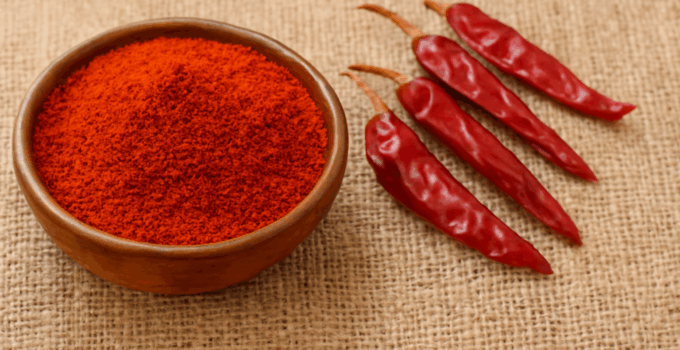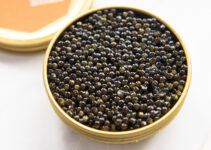In the vibrant world of Indian spices, Kashmiri Mirch holds a special place. Known for its deep red hue and mild heat, this spice is often the secret behind the irresistible color of Indian curries and tandoori dishes.
While many confuse Kashmiri Mirch powder with Deggi Mirch, the two are not the same. In this article, we’ll explore the benefits of Kashmiri Mirch and offer a clear comparison: Deggi Mirch vs Kashmiri Mirch.
Page Contents
What Is Kashmiri Mirch?
Kashmiri Mirch is a variety of chili pepper native to the Kashmir region of India. It is prized for its bright red color and subtle heat, making it an ideal spice for dishes that need color without intense spiciness. The chilies are sun-dried and ground into a fine powder, known as Kashmiri Mirch powder, and are widely used in Indian households and restaurants.
Health Benefits of Kashmiri Mirch Powder
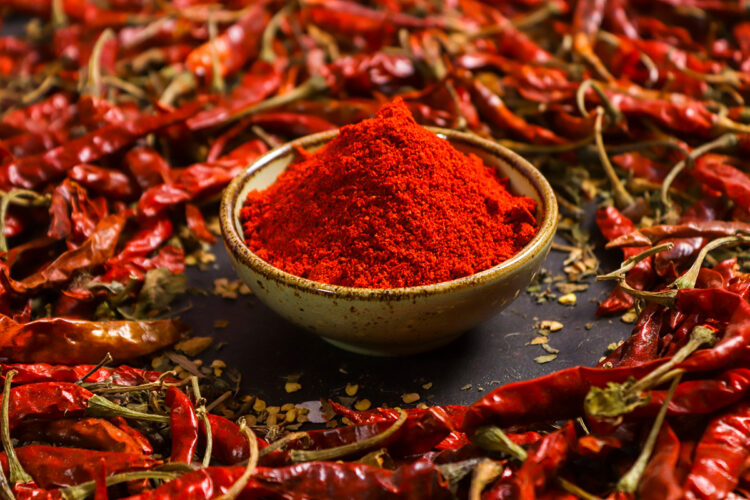
Source: thespicecupboard.co.uk
1. Rich in Antioxidants
Kashmiri Mirch is high in vitamin C and carotenoids, both of which are powerful antioxidants. These help combat free radicals in the body, potentially lowering the risk of chronic diseases and slowing the aging process.
2. Boosts Immunity
Thanks to its vitamin C content, Kashmiri Mirch supports a healthy immune system. It may help your body fight off infections and reduce inflammation, especially when consumed regularly in balanced amounts.
3. Improves Digestion
Contrary to the belief that all chili causes stomach upset, the mild nature of Kashmiri Mirch can actually help stimulate digestive enzymes, promoting better digestion and nutrient absorption.
4. Enhances Skin Health
The antioxidants in Kashmiri Mirch can also benefit your skin by reducing oxidative stress and supporting collagen production, which keeps your skin firm and youthful.
5. Supports Weight Loss
Chilies, including Kashmiri Mirch, contain capsaicin, a compound known to boost metabolism and promote fat burning. Although its capsaicin content is milder compared to other chilies, it can still offer a gentle metabolic boost.
Culinary Uses of Kashmiri Mirch Powder
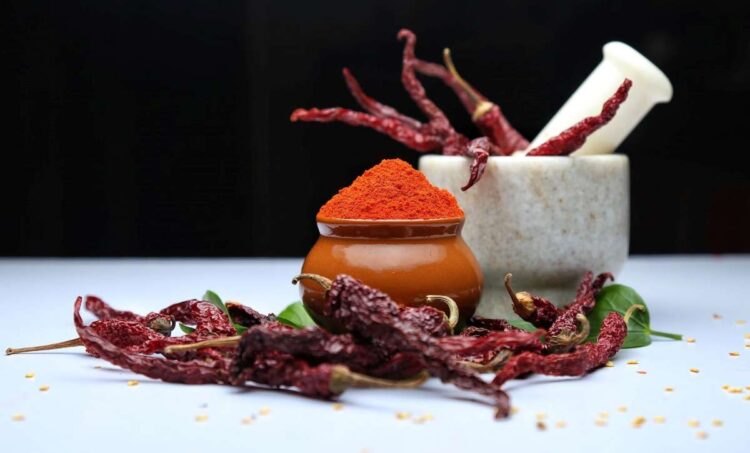
Source: vikhrolicucina.com
Kashmiri Mirch powder is used widely in Indian cuisine, especially in:
- Tandoori dishes: It gives meats and vegetables a deep red tint without overwhelming spice.
- Curries and gravies: They enrich the dish’s appearance and add subtle warmth.
- Marinades and sauces: Their color and flavor work well with yogurt, garlic, and other spices.
Because of its mild heat and vivid color, Kashmiri Mirch powder is ideal for people who prefer flavor over fire.
Deggi Mirch vs Kashmiri Mirch ─ What’s the Difference?
One of the most common questions among home cooks is: Deggi Mirch vs Kashmiri Mirch—are they the same? The short answer is no.
|
Feature |
Kashmiri Mirch |
Deggi Mirch |
| Origin | Grown in the Kashmir region of India | A spice blend made from multiple red chilies |
| Composition | Pure chili powder from Kashmiri red chilies | Blend of Kashmiri chilies and other varieties |
| Heat Level | Mild (1,000–2,000 Scoville Heat Units) | Moderate (2,000–5,000 Scoville Heat Units) |
| Color | Deep, vibrant red | Bright red, slightly more orange |
| Flavor Profile | Mild, slightly sweet, smoky | Spicier, deeper chili flavor |
| Primary Use | Adds color without strong heat | Adds both color and moderate heat |
| Common Dishes | Butter chicken, paneer tikka, gravies | Tandoori dishes, spicy curries |
| Form | Finely ground chili powder | Finely ground spice blend |
| Best For | Mild dishes, rich color without spice | Spicier dishes that still need vibrant color |
| Availability | Available as single-origin chili powder | Available as a branded spice blend |
Spice Color and Heat Comparison
If you’ve ever stood in your kitchen staring at two bright red powders—Kashmiri Mirch and Deggi Mirch—wondering which one brings more heat or better color, a visual guide can help settle the confusion.
Below is a simple chart that compares these spices based on heat level, color intensity, and common culinary applications. Think of it as a cheat sheet for choosing the right chili powder every time you cook.
Spice Color and Heat Scale Chart
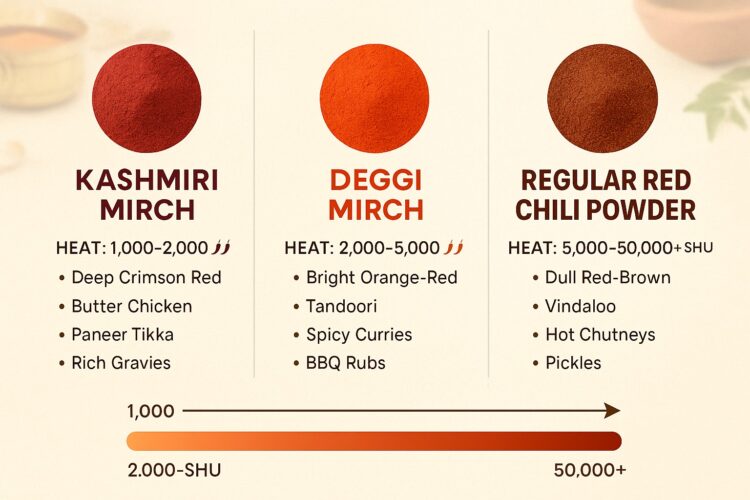
This visual reference highlights why Kashmiri Mirch is so popular in dishes where color is the star. Meanwhile, Deggi Mirch gives you a fiery upgrade without going overboard, and traditional red chili powder is best reserved for dishes where heat is the priority.
🟠 Did you know?
SHU stands for Scoville Heat Units, which measure chili pepper spiciness. Kashmiri Mirch’s low SHU rating makes it great for family meals, while Deggi Mirch gives you moderate heat with a similar pigment punch.
Understanding this scale makes it easier to adapt recipes to your heat tolerance—or to impress your guests by balancing beauty with boldness.
Common Mistakes When Using Kashmiri Mirch Powder
Despite being a mild chili powder, Kashmiri Mirch can be tricky if you’re not familiar with how it behaves during cooking. A common error is assuming that more powder means more color. In reality, its signature red tone appears best when used the right way, not in bulk.
The most frequent mistakes include:
- Adding it at the wrong time – Kashmiri Mirch blooms best in medium-hot oil or ghee. If it’s added too early or on high heat, it burns and turns brown, which creates bitterness and ruins the color.
- Using low-quality or mixed products – Not all Kashmiri Mirch powders are created equal. Some brands mix in hotter chilies or color additives. Always look for pure, single-origin powder.
- Poor storage habits – Moisture and light degrade both flavor and color. Store it in a dry, dark place in an airtight container.
- Expecting it to bring the heat – Many cooks mistakenly assume “red equals spicy.” Kashmiri Mirch is about visual warmth and smokiness, not fire. Don’t use it as your main source of heat.
Avoiding these missteps helps the spice do what it does best—add stunning color and gentle depth to your food.
The Science Behind the Color
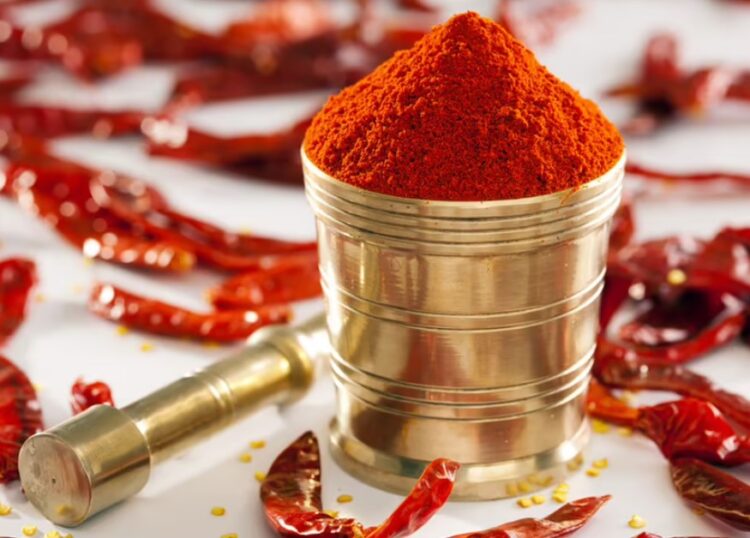
Source: recipes.timesofindia.com
You might wonder: What gives Kashmiri Mirch its famous vibrant red hue? The answer lies in natural compounds called carotenoids, especially capsanthin and capsorubin, which are found in red chili varieties. These pigments are responsible for the rich tones that make Indian dishes visually irresistible. When Kashmiri chilies are sun-dried and ground properly, their color becomes highly concentrated in powder form.
Another important fact is that carotenoids are fat-soluble, which means they need a bit of oil to fully release their pigment. That’s why recipes often call for blooming the spice in hot oil or ghee. The moment the powder hits the fat, the color infuses into the dish, turning simple ingredients into a restaurant-quality curry.
Deggi Mirch also contains carotenoids, but because it’s a blend, the color leans more toward orange-red rather than deep crimson. This visual difference may seem small, but it’s noticeable in white or cream-based dishes where the red hue really pops.
So next time you’re looking to impress guests with both taste and presentation, remember—science is doing some of the heavy lifting in your spice jar.
Tips to Make the Most of Kashmiri Mirch in Indian Recipes
If you’re aiming for that rich restaurant-style color and aroma in your Indian cooking, using Kashmiri Mirch correctly is key. Its mildness and pigment potential make it a versatile spice, but timing and method matter just as much as the ingredient itself.
Try these practical tips:
- Bloom the powder – Before adding liquids, briefly sauté Kashmiri Mirch in ghee or oil. This unlocks both color and aroma without bitterness. Just don’t overcook—15–20 seconds is enough.
- Pair with dairy – Kashmiri Mirch blends beautifully with yogurt, cream, and paneer. These bases carry the color well and allow the spice to shine without competing flavors.
- Add later in the process for brightness – For curries or dals, stir it in toward the end of cooking to enhance color without losing vibrancy to long simmering.
- Use with other spices – While beautiful on its own, it’s often paired with cumin, coriander, and turmeric to build a complex base. Kashmiri Mirch rounds out the spice mix with visual warmth.
- Avoid high heat – This spice is delicate. High temperatures destroy both color and antioxidants, so cook it gently.
Using Kashmiri Mirch well is less about power and more about finesse. A little care goes a long way in elevating your dish from homemade to chef-level.
Which One Should You Use?
If you’re cooking for a crowd that prefers flavor without intense heat, Kashmiri Mirch powder is your go-to. It’s excellent for butter chicken, paneer tikka, and festive gravies.
However, if you want something that packs a bit more punch without sacrificing color, then Deggi Mirch is the better option. It’s often used in commercial kitchens or recipes that need both color and spice.

